
Psychological and pedagogical counselling centre no. 19 (PPP19) is a place that assists children and their parents living in the district Ursynów in Warsaw, including children from nearby schools and kindergartens. The centre helps in reaching the right diagnosis about e.g. language, memory and intellectual abilities and supports children’s mental development. The number of patients suffering from auditory hypersensitivity has also increased. This is especially seen after the Covid pandemic period when children stayed in comfortable acoustic conditions at home for over two years, and now they need to adapt to noisy places again.
“The long period of isolation has meant that children now have a lower tolerance threshold to sounds,” says Ewa Rycombel, a speech therapist at PPP19 in Warsaw. “Some of them cover their ears in pain, others become abnormally animated. Children who studied remotely are now suffering and are more sensitive to noise. The return to a noisy school setting is so unsettling for them that an increasing number of anxious parents are bringing their little ones to the centre,” she adds.
Noticing a problem with the acoustics at PPP19
PPP19 relocated not so long ago and is currently housed in a former secondary school building. Unfortunately, it turned out that the rooms are too reverberant to work with children and diagnose them properly. However, the director and the staff of the centre, are very conscious of the acoustics impact and they realized that the conditions could be a lot better.
The centre director, Ms Beata Mierzejewska, knew the example of the nearby primary school no. 340. It was the first school in Poland which was fully adapted to the appropriate acoustics conditions. Knowing that there are proper solutions which can help with reverberation noise in the centre. Ms Mierzejewska set about trying to secure funding for an acoustic refurbishment of the centre. She managed to get financing for acoustic materials for 3 rooms only, which were considered the most important.
Rooms chosen:
- the exercise class hall where children work in groups,
- the room for assessing the psychomotor development of the youngest patients (0-3 years old),
- the ground-floor corridor.
Before the refurbishment, rooms were finished in hard materials which generally reflected sound – vinyl floor coverings and cement-lime plaster on the walls and ceilings.
Acoustics measurements and treatment
Acoustic measurements were done in these rooms. Reverberation time and Speech Transmission Index (STI) were measured according to Polish standards PN-B-02151-4:2015-06. The exercise class hall has an area of 33 m2 and there is a lack of furnishings. Before the refurbishments, the reverberation time was long in all frequency bands. It was 2,86 sec on average. The Speech Transmission Index value was measured as 0,39 (poor quality). After installing sound-absorbing panels on the ceiling and walls (sound absorption coefficient αw = 1,0), the acoustic conditions of the room improved significantly. The results are presented in the diagram and the table below.
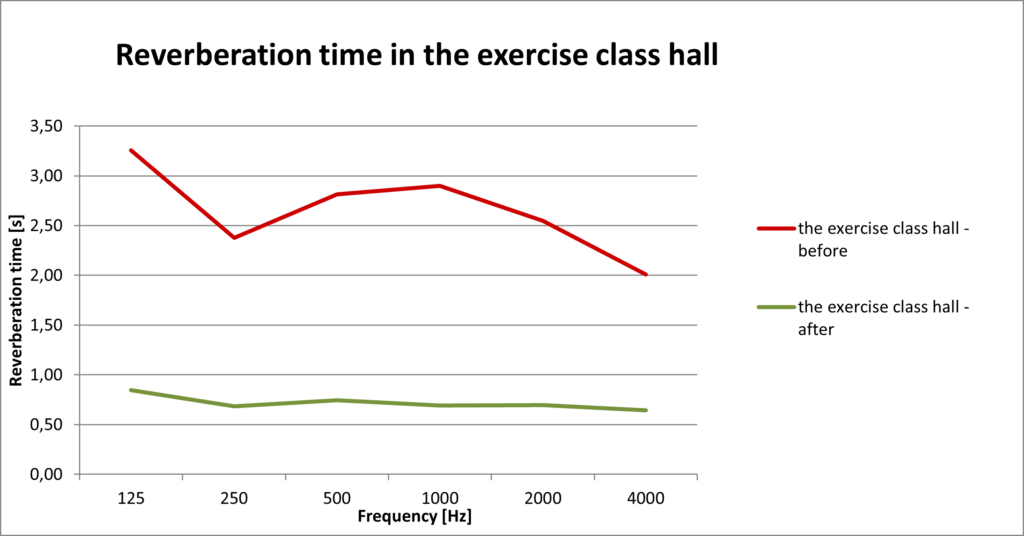

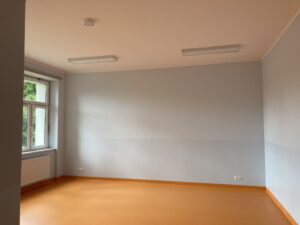
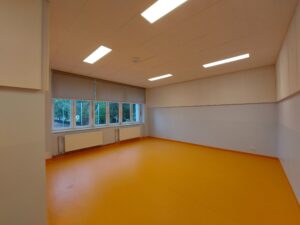
Similarly, extremely good results were obtained after the acoustic adaptation of the room for assessing the psychomotor development (area of 18 m2). The results are shown below.
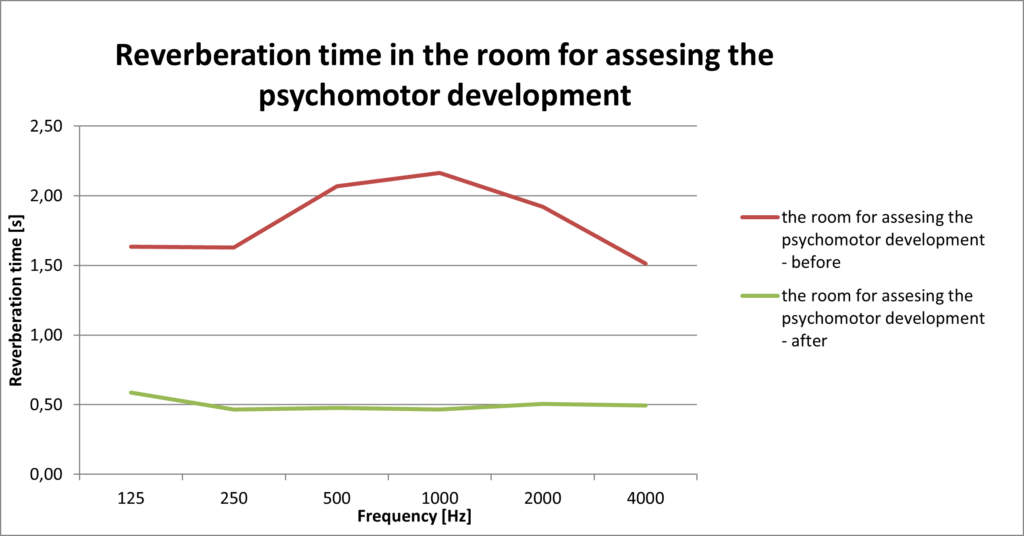

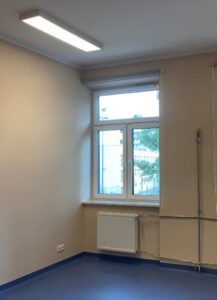
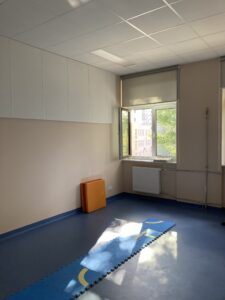
No measurements were taken in the ground-floor corridor due to ongoing examinations in the adjacent rooms. However, the improvement in acoustic comfort is noticeable by the staff and the patients in this interior as well. The staff had noticed that some children with significant auditory hypersensitivity who visited the centre were unable to use the corridor without covering their ears. This changed after the refurbishment.
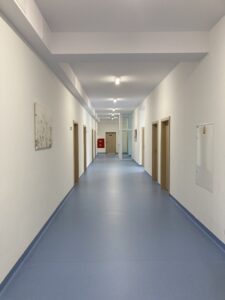
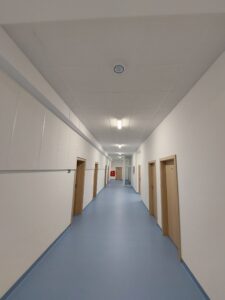
The contentment of new conditions in PPP19
The example of the centre in Ursynów shows how important the issue of noise reduction in educational and medical facilities is so critical. People working there are aware that it is impossible to make an accurate diagnosis if you are surrounded by noise. Today they have optimal acoustic conditions in at least three rooms.
“Both the staff and our patients hear a clear difference and are really pleased with the new conditions in the acoustically upgraded areas,” Beata Mierzejewska acknowledges with a smile. “Now every member of staff wants to hold their sessions in the rooms that have noise reduction. That’s why I’m definitely going to try to obtain noise-reduction funding for more rooms”, says the centre director.
More information on this case study can be found here.
By Monika Sadlowska, Concept Developer Healthcare, Poland

